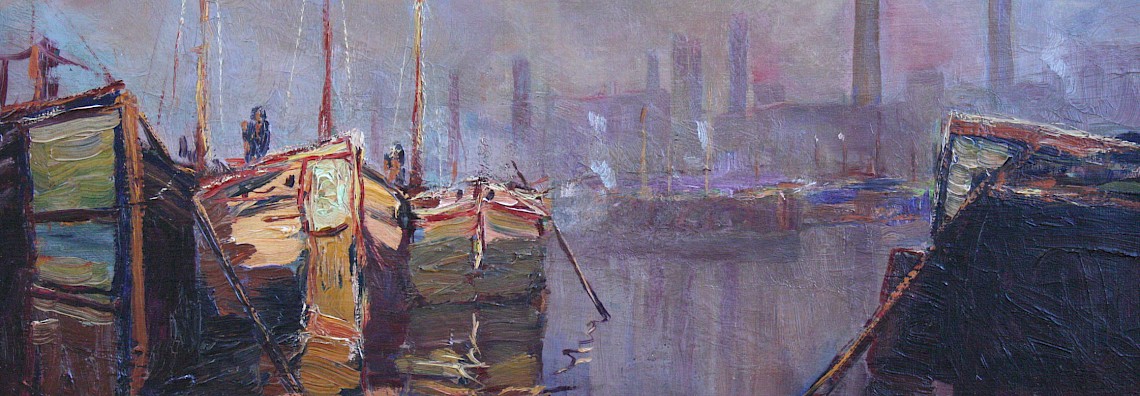Origin
The main source of inspiration was the Ardennes region, but the influence of the French impressionists was crucial. The luminist vision reached the Liège Academy through its director Evariste Carpentier, who came originally from Flanders and who had worked for several years in Paris.
Liège and its surroundings developed as an important centre of landscape painting from the end of the nineteenth century and the appointment of Evariste Carpentier as a professor at the academy was a decisive factor. It was thanks to him that a fully-fledged school was founded: the Liège school of landscape painting. At the outset, the school was built around the works of artists who did not live in the regions that inspired them (Ardennes, Fagne, Campine, Hesbaye, and Condroz), and they were soon followed by other generations of painters from outside Liège, but local painters too.
The majority of the artists who helped create the unity of the school are included in this dictionary. Each of those artists, most of them of the impressionist tendency, is an essential element for the understanding of the movement.
"It is pointless to systematically try to categorize some artists and force them into schools, Jacques Hendrick once said; and while most of them show in their works the qualities of brightness, moderation and spirituality that are generally typical of Walloon artists, there is no denying that the complex and varied personality of the artists often takes them beyond the strict confines generally imposed by reference to origin and school."
First of all, it should be observed that the term "Walloon school of painting (école wallonne de peinture)" does not fit any reality if used in a strict sense. There are many good painters, but there is no such thing as a school.
Far be it from us then to attempt a systematic classification of Walloon works of art: that would be a twofold mistake. Wallonia is a home of individualism; the work of its artists is hard evidence of that.
Walloon art defies classification. In fact, there are only two or three groups of artists that can seriously be referred to as groups.
A survey of artists in Wallonia is thus a complex task from which two major facts immediately emerge: on the one hand, the individualism of these artists cannot be denied, but on the other hand, there is a spiritual community uniting them, beyond their personal tendency.
The Liège school of landscape painting is the result of that "spiritual community"; different visions of landscape scenes united by a common ideal that its representatives have constantly shared throughout the evolution of their works.
Over three generations, these painters, with their idealized vision of nature, have each interpreted the landscape in their own way, according to their own genius. It was between 1880 and 1950 that Liège landscape activity was the most intense. Before then, in the age of romanticism and realism, there were no plein air artists, and afterwards came a diversification of genres.
Artists who painted landscapes in the region of Liège (even those coming from outside) and artists originating from Liège (but painting elsewhere) and even more so artists from Liège painting their local landscapes (their terroir) became the melting pot of the Liège school of landscape painting. This provided a spirit of emulation, even if they would not admit to this.


